Now that autumn’s extravaganza of color is receding to tired shades of russet and brown, you might notice little clusters of yellow confetti-like flowers as you meander through the woods. These are the blooms of common witch hazel, Hamamelis virginiana, a shrub which itself usually grows in clusters. It’s easy to miss witch hazel’s blooming period in fall, when we’re more focused on foliage than flowers, but yesterday morning the light was just right and the flowers begged for a photo shoot.
Not to mention the allure of a plant that has long been used for medicinal purposes. Witch hazel is a strong antioxidant, sometimes used topically as a natural remedy for conditions like eczema and acne, and to reduce the swelling of varicose veins and hemorrhoids. So, in the spirit of appreciating and understanding our natural resources, enjoy these photos and perhaps learn a few facts about witch hazel.
Why would a plant of the temperate forest bloom in fall, when pollinating insects are far less active? Anderson and Hill (American Journal of Botany, 2002) speculate that common witch hazel evolved a fall blooming strategy to avoid competition for pollinators with the closely related Ozark witch hazel (H. vernalis), which blooms in spring and summer.
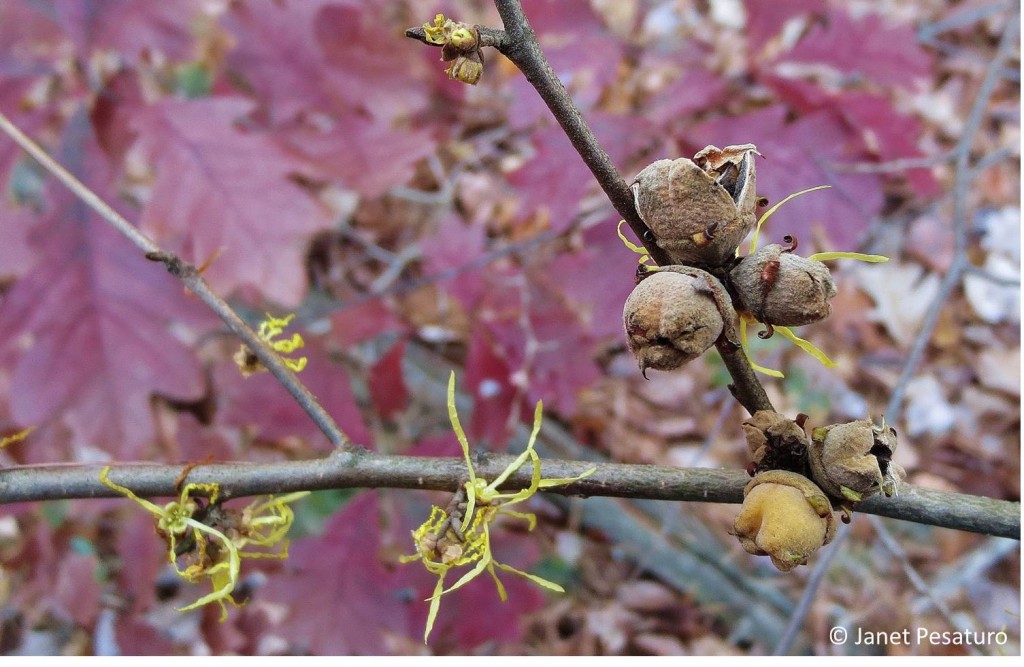
Witch hazel flowers and fruit capsules contrast beautifully with the russet backdrop of fallen oak leaves.
Common witch hazel flowers are pollinated by a wide variety of flies and bees. A period of dormancy follows pollination, and actual fertilization does not occur until the next spring. Then, in late summer and fall, fruit capsules snap open, and mature seeds are ejected up to 30 feet away, leaving empty brown fruit capsules. So, the capsules in the photos above and below, developed from last year’s flowers. The fact that the seeds are not dispersed very far from the parent plant explains why witch hazel shrubs tend to grow in clusters.
Most witch hazel seeds never reach maturity, due to parasitism or predation. Yesterday I found quite a few fuzzy or deformed fruit capsules, which I’m guessing indicates parasitism. The capsules in the next photo, for example, do not appear normal. I wonder if the parasite is the witch hazel weevil described here.
Most of the witch hazel shrubs I observed yesterday had few fruit capsules, and a good portion of them appeared deformed. But one shrub was loaded with capsules, and most of them normal:
Why was this particular shrub so successful? How had so many of its fruits evaded parasites and predators? I’d love to see your ideas in the comment section below.
And finally, it’s worth noting that if you search for witch hazel later in the season, the flowers look a little different. The long spidery petals shrivel up, and all you see are the small, stout sepals, as shown in the photo below.
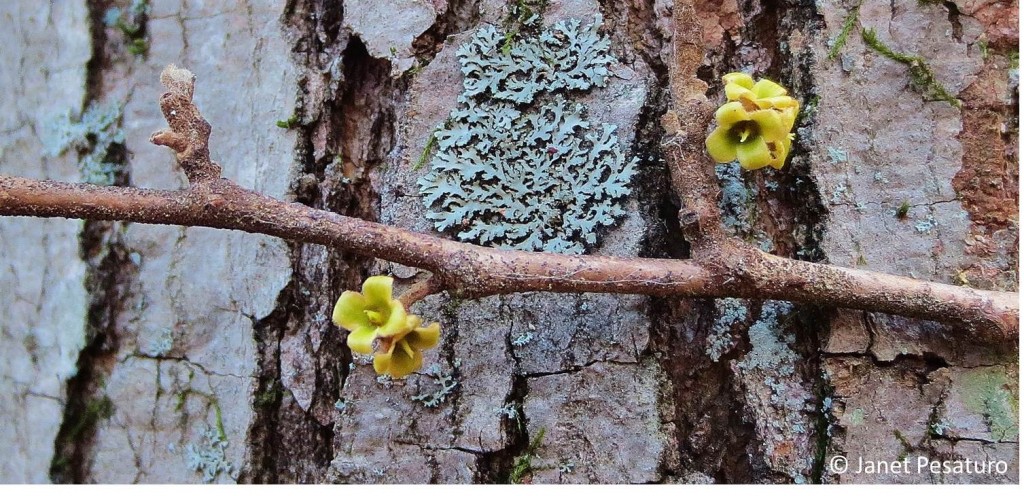
Witch hazel flowers after spidery petals have fallen off. Flowers will look like this throughout winter.
Shared on:











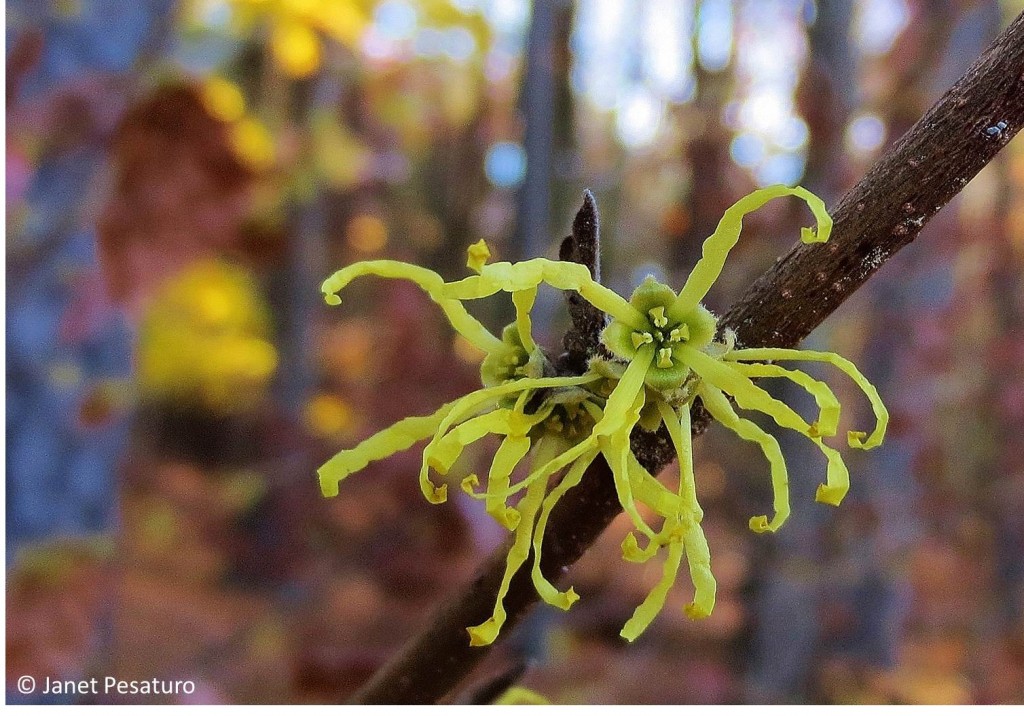
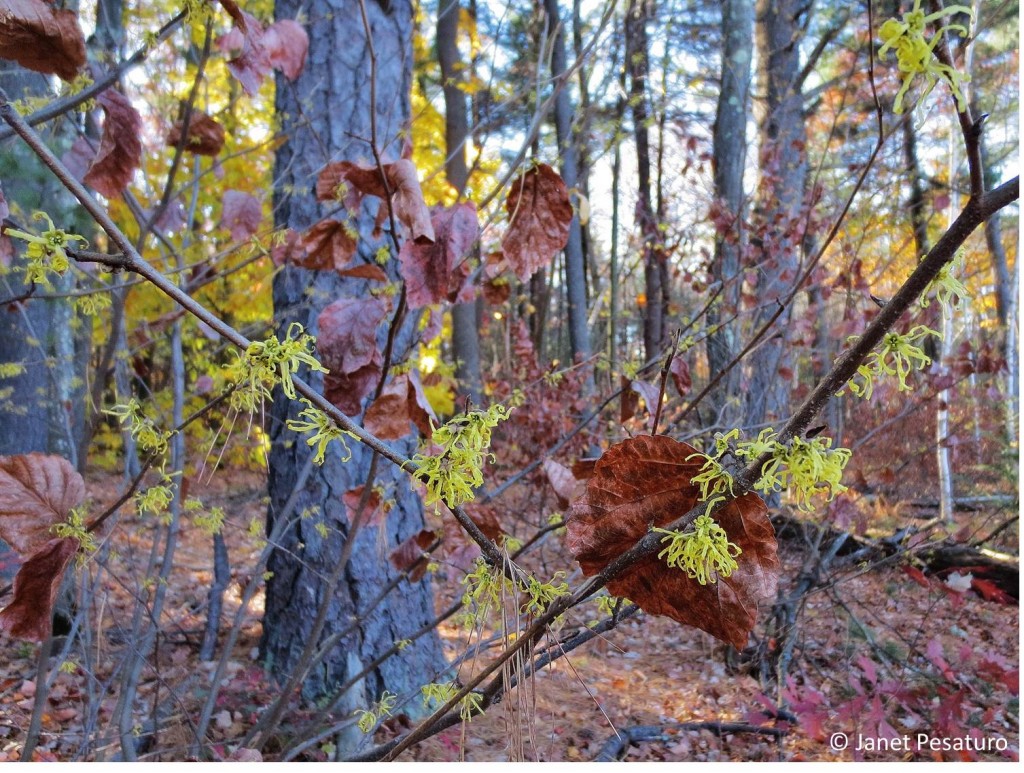
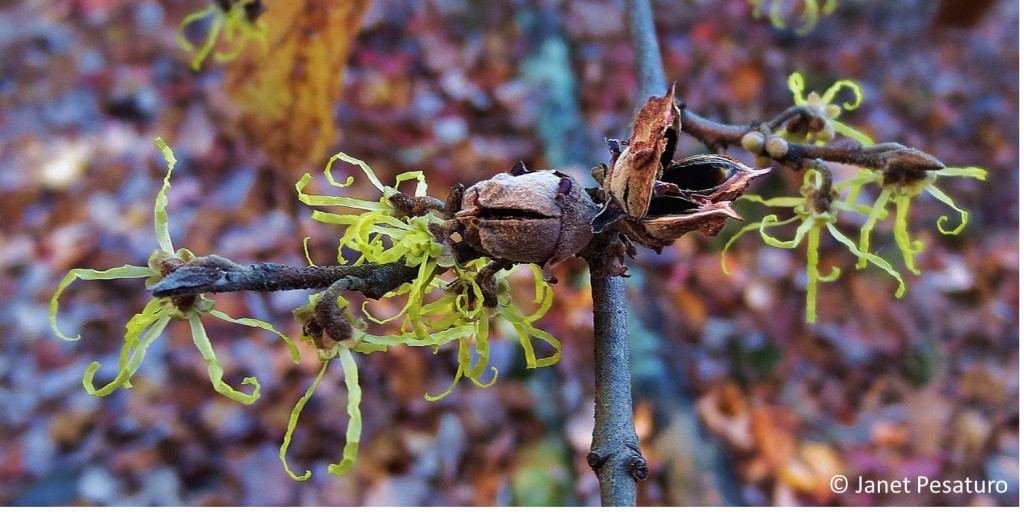
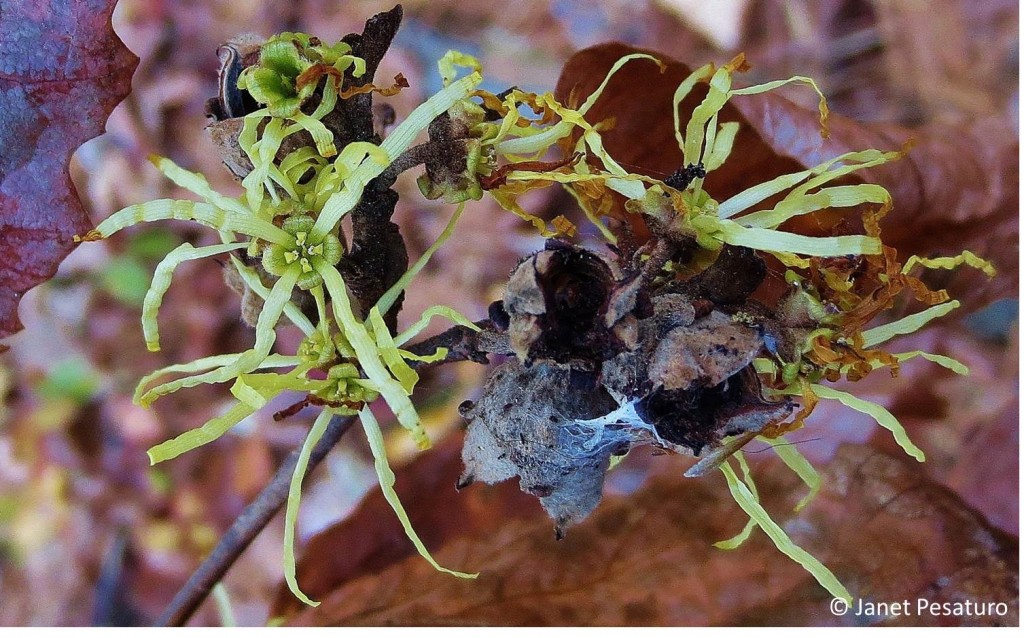
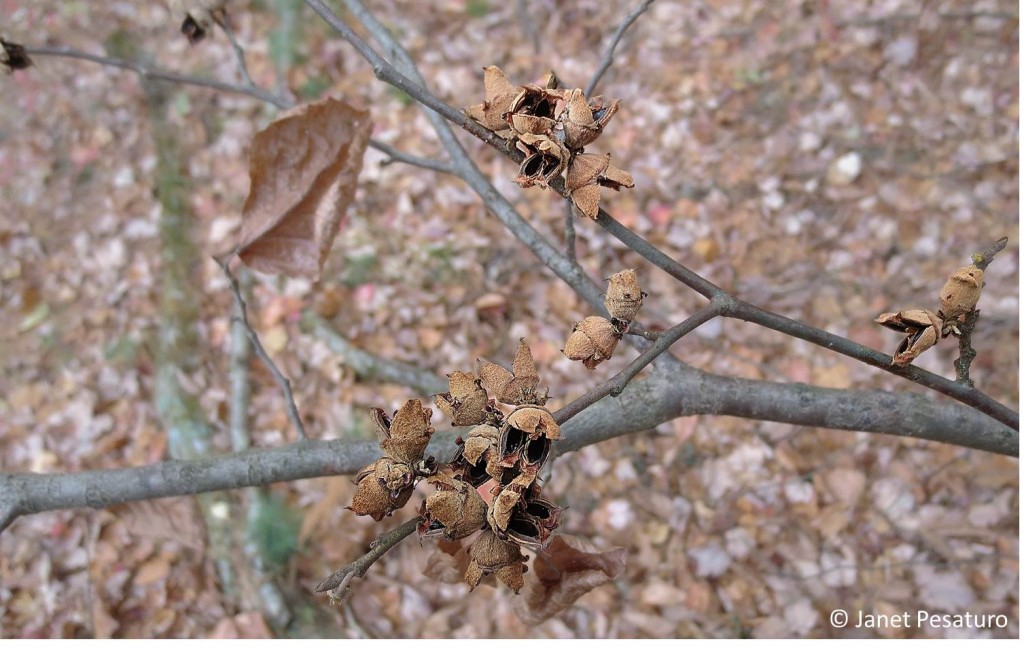

This was very interesting. I did not know any of this. Thanks for sharing with us at The HomeAcre Harvest Hop!
Please join us again Thursday for our regularly scheduled hop at:
http://summersacres.blogspot.com/2013/11/the-homeacre-hop-43.html
~Ann
This is great info…I didn’t even have a clue that witch hazel would grow wild and I sure didn’t know what it looked like. I think I’m going stroll the the woods over the weekend and see if I have any around here. Thanks for sharing this.
This is super interesting to me as I’ve never looked for it before but always meant to do so. I’m bookmarking some of your posts. They’re excellent. Love the photos.
Thanks for your comments, Toni. We are birds of a feather, I think. I love plants and foraging for wild edibles.
Very interesting, I use witch hazel in my skin care homemade products, but never thought much about where it came from. Guess I need to research this further, thanks for sharing on Tuesdays With a Twist.
Hi there! Do you usse Twitter? I’d like to follow you if tuat would be okay.
I’m absolutely enjoying your blog and look forward to
new updates.
This is fascinating. I’ve been asked to write an Arbor Day poem for our school celebration of Arbor Day (3rd year in a row), and this year’s plant, given to each student grades K-7, is the “Common” Witch Hazel, a very uncommon plant. thank you for all of this information. I love the flower sepals that prevail in winter. (You must live in a temperate winter climate. I live off the New England coast, can be very cold with the wind.)